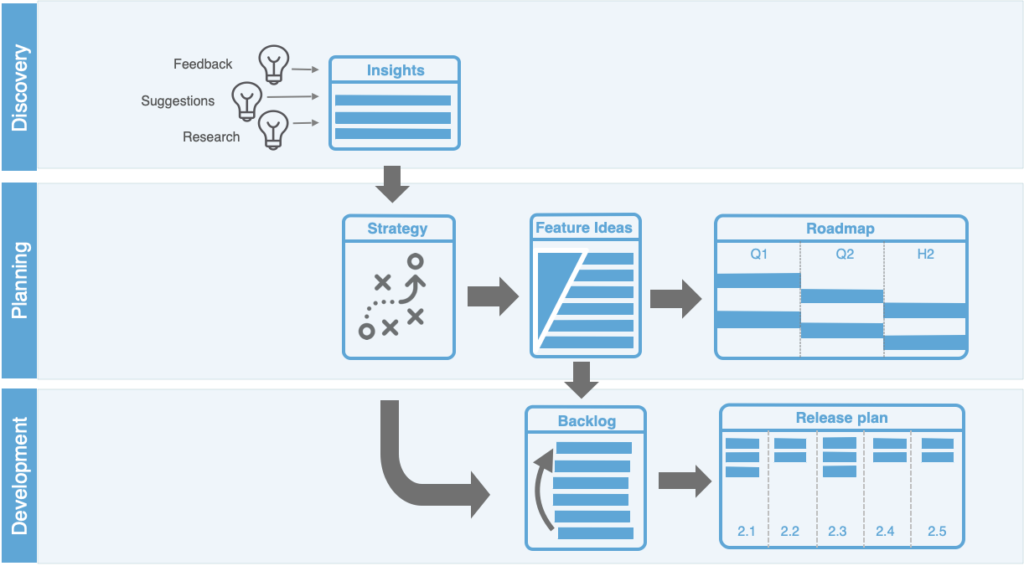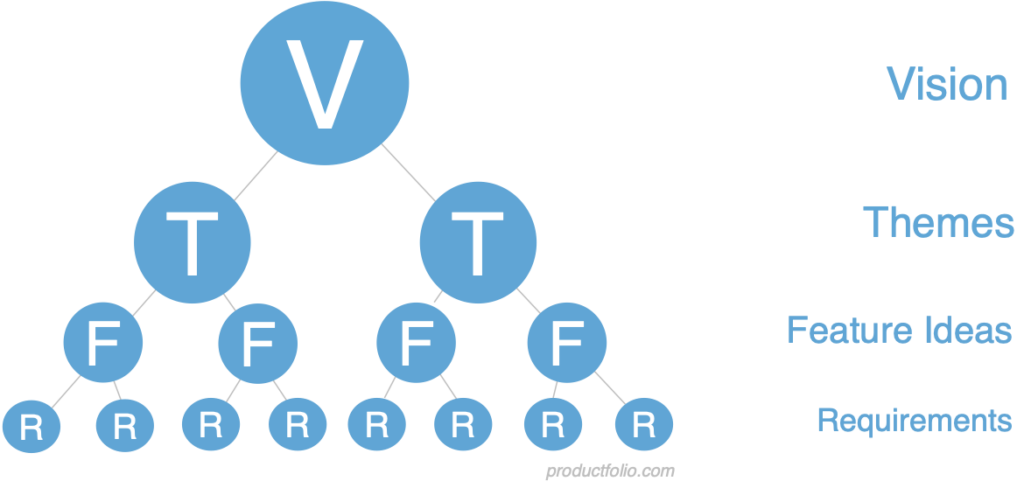Getting Started Guide
Productfolio is a workflow tool for facilitating end-to-end product planning, from gathering insights and suggestions, to defining your strategy, prioritization, planning, and release. Below is an overview of the workflow that Productfolio is designed to support:

At a macro-level, there re three major stages to product planning:
i. Product Discovery
Discovery is the process of figuring out what to build and why. It is often a ‘big burst’ of activity at the beginning of a product’s lifecycle, followed by ongoing incremental discovery as we continue to refine and improve our product. Productfolio facilitates discovery in two ways: (i) with a product portal for receiving feedback and suggestions and (ii) with an Insights section for collecting all of our learnings over time and linking those to feature ideas, so that we do not lose track of our learnings.
ii. Product Planning
Product Planning begins with defining the product strategy, and follows with ideation of product features and prioritization to determine what the best “ROI” efforts are for our product to address customer needs that surfaced during discovery. This starts with defining our strategy strategy, including vision, goals, themes, and customer personas, to anchor our ideation thinking. Then, we collect feature ideas and score them according to one of 6 scoring rubrics that Productfolio supports. Once we have a stack-ranked list of priorities, we can drag these onto our roadmap to reflect a plan for how resources will be allocated. Productfolio supports for timeline and Kanban (now, next, later) roadmaps.
iii. Product Development
Once planning is out of the way, we can begin breaking down our feature ideas to requirements and planning releases (aka sprints) across features. Productfolio supports this with a full-featured backlog for prioritizing your requirements, dragging them into releases, syncing to Jira if that’s where your development team is most comfortable, or just do all your backlog planning in Productfolio!
Planning Hierarchy
For additional context, this is the implicit planning hierarchy of Productfolio. It is assumed that you’re starting by defining a strategy, breaking that down to Themes, coming up with Feature Ideas that align to those themes, and once you come up with a roadmap, you begin breaking down those Feature Ideas into requirements.

Summary
Hopefully the conceptual models help to understand how best to user Productfolio, both in terms of intended workflow and planning hierarchy. To really put it all toughener, check out this 2- minute video that provides and end-to-end walkthrough of the planning platform.